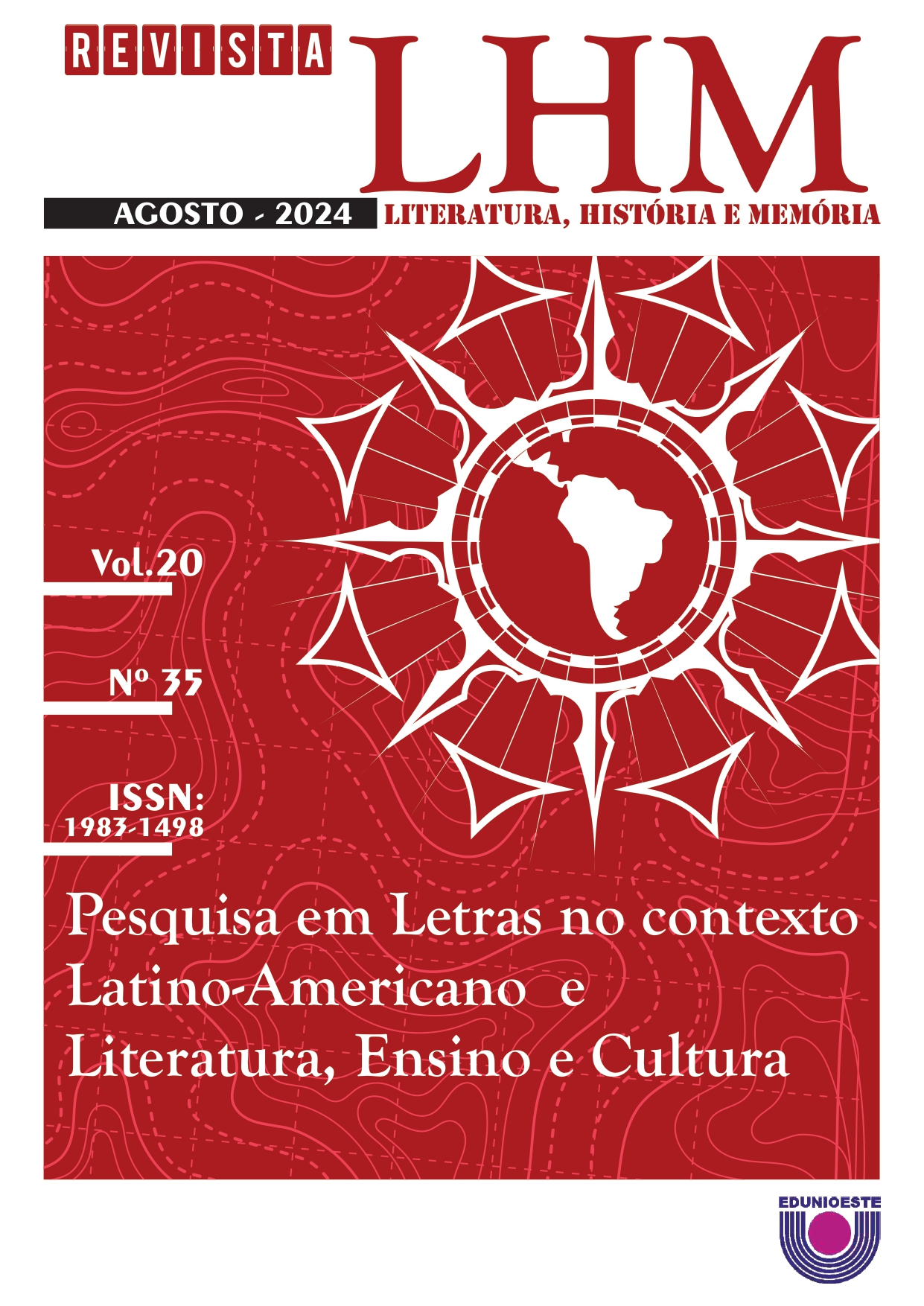Teófilo Dias e o parnasianismo
estudo estatístico textual
DOI:
https://doi.org/10.48075/rlhm.v20i35.31843Resumen
Este artigo apresenta os resultados de uma pesquisa quantiqualitativa realizada com Fanfarras (1882), de Teófilo Dias, poeta maranhense pouco (ou quase nada) discutido nos dias atuais, mas que teve grande atuação no contexto político, cultural, social e literário brasileiro, precisamente durante os decênios de 70 e 80 do século XIX. Para isso, foi utilizada uma ferramenta computacional, o Aoidos (https://aoidos.ufsc.br/), que ajudou no cotejo dos elementos formais de versificação de Teófilo Dias e de outros poetas, o caso de Alberto de Oliveira, Raimundo Correia e Olavo Bilac, os quais foram utilizados no corpus a fim de servirem de contrastes no que toca aos resultados quantitativos de Fanfarras gerados pela ferramenta usada. Dentre as análises possíveis de serem feitas no Aoidos, realizou-se o levantamento automático da disposição dos decassílabos heroicos e sáficos, do alexandrino clássico, da forma fixa de poema soneto e da disposição dos metaplasmos sinalefa e sinérese (elementos formais de versificação esses frequentemente associados à poesia parnasiana). Os resultados das análises quantiqualitativas realizadas na pesquisa evidenciam que Teófilo foi um poeta multifacetado, que soube ele dialogar com seu tempo e espaço. Existe, em sua obra, um acúmulo de poéticas distintas, seja no que toca ao que convencionalmente é chamado Romantismo, seja em se tratado do Realismo e do Parnasianismo.
Descargas
Publicado
Cómo citar
Número
Sección
Licencia

Esta obra está bajo una licencia internacional Creative Commons Atribución-NoComercial-CompartirIgual 4.0.
Aviso de Direito Autoral Creative Commons
Política para Periódicos de Acesso Livre
Autores que publicam nesta revista concordam com os seguintes termos:
1. Autores mantém os direitos autorais e concedem à revista o direito de primeira publicação, com o trabalho simultaneamente licenciado sob a Licença Creative Commons Attribution que permite o compartilhamento do trabalho com reconhecimento da autoria e publicação inicial nesta revista.2. Autores têm autorização para assumir contratos adicionais separadamente, para distribuição não-exclusiva da versão do trabalho publicada nesta revista (ex.: publicar em repositório institucional ou como capítulo de livro), com reconhecimento de autoria e publicação inicial nesta revista.
3. Autores têm permissão e são estimulados a publicar e distribuir seu trabalho online (ex.: em repositórios institucionais ou na sua página pessoal) a qualquer ponto antes ou durante o processo editorial, já que isso pode gerar alterações produtivas, bem como aumentar o impacto e a citação do trabalho publicado (Veja O Efeito do Acesso Livre).
Licença Creative Commons
Esta obra está licenciada com uma Licença Creative Commons Atribuição-NãoComercial-CompartilhaIgual 4.0 Internacional, o que permite compartilhar, copiar, distribuir, exibir, reproduzir, a totalidade ou partes desde que não tenha objetivo comercial e sejam citados os autores e a fonte.


